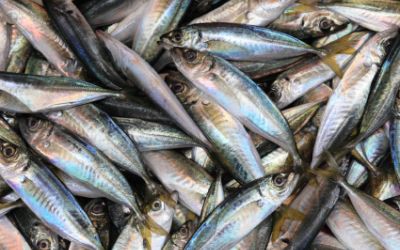The Changing Dynamics of the Omega-3 Industry
September 5, 2012

The global omega-3 ingredients industry is marking major milestones. The global market revenue for marine and algae eicosapentaenoic acid (EPA)/ docosahexaenoic acid (DHA) omega-3 ingredients will likely surpass $2 billion in industry revenue in 2012just after it surpassed 100,000 metric tons in global consumption in 2011. The market is expected to grow at a double-digit rate from now to 2016, due to China and the rest of the Asia Pacific (APAC) region quickly gaining market share in terms of unit demand; thus, these regions will offset stymied demand growth in the European markets.
Scientific research continues to be the backbone of this phenomenal global growth, and drives the demand for higher quality and quantity of omega-3 products. In particular, more consumers are increasingly aware of the health benefits of consuming omega-3 products, and are increasing their own per capita consumption. Also, omega-3s' proven health benefits have increased consumers' willingness to pay for omega-3s and have convinced governments of their long-term health and wellness benefits.
The consequences of this trend can be summed up into one wordconcentration. Specifically, strong growth in demand is motivating suppliers to increase the concentration of the benefit-conferring fatty acids EPA and DHA in a given unit to take advantage of the trend of consumers trading up" from standard fish oil supplements to higher concentrated, pharma-grade, specialty products. Today, the dietary supplement segment remains the largest segment of the omega-3 market space, but growth in this area is expected to diminish over time due to market saturation. In turn, the pharma segment is expected to see a significant share gain during the forecast period, due to traditional supplement consumers selecting higher quality supplement products and doctor-prescribed alternatives. Consequently, concentrates are expected to see significant growth in market share relative to standard fish oils.
In addition, the industry landscape is consolidating among the large tier-one industry participants. Global health company DSM is rapidly becoming the largest supplier of omega-3 ingredients, in terms of volume, in the world, due to its acquisitions of Martek Biosciences and Ocean Nutrition Canada. Today, the supply chain structure of the EPA/DHA omega-3 ingredients market is constantly evolving, with factors such as the nature of the products, economic and regulatory environment, the structure of downstream industries and upstream raw material supplies influencing changes in the value chain. Consequently, the omega-3 market is witnessing increasing concentration among traditional suppliers. This is particularly true with the marine oils sector, which is facing uncertainty regarding the supply and quality of raw materials.
Surprisingly, the global marine and algal oil omega-3 ingredients market is actually relatively fragmented. The top five firms had a 50-percent share of the market in 2010, compared to roughly 70 percent in 2008, despite the recent merger and acquisition activity by DSM and BASF. For every acquisition announcement, a new set of market participants are motivated to enter the market due to its attractive growthespecially from Latin America and China. This suggests the degree of competitive rivalry is relatively moderate. However, with the high market growth rates and increasing opportunities, every participant is actively involved in defending its market share, and industry consolidation is expected to increase.
The degree of competitive rivalry varies by region and product source. In North America, the market is more concentrated relative to the global market. This is due to the relatively low number of market participants in the marine oil space and the current virtual, though weakening, monopoly of DSM/Martek in the U.S. DHA market. In Europe and APAC, the degree of competitive rivalry is much higher because these markets have more market participants with smaller market shares. In general, competition in the algal oil market is low, but among all omega-3 EPA and DHA ingredients companies, the degree of competitive rivalry is much higher.
The phenomenon of concentration is a symptom of the omega-3 market approaching market maturity with respect to its product life cycle. Inorganic growth strategies and step-wise innovation are some of the signs that me-too" growth strategies among new market participants have reached a crescendo and will become increasingly less effective. Effective competition in the market will be largely based on brand name strength, product quality and superiority, and the integrity and technical strengths of the company.
Christopher Shanahan is global program manager food ingredients practice at Frost & Sullivan.
Find more information on the health benefits of omega-s by attending the SupplySide West education session "EPA/DHA Omega-3 for Health and the Prevention/Management of Chronic Disorders: Update 2012" from 2 to 2:50 p.m. on Tuesday, Nov. 6, in Las Vegas.
About the Author(s)
You May Also Like




.png?width=800&auto=webp&quality=80&disable=upscale)